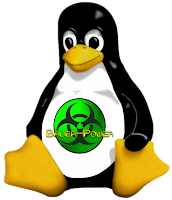With that out of the way, lets jump right in. In this post I will tell you how to team two NICs (Network Interface Cards) using Ubuntu Linux. If you have ever done it in WIndows it is usually pretty easy. Especially if you use an HP server. In Linux, it is actually pretty easy too. You just need to install one extra little package, create a config file for your team and modify your /etc/network/interfaces file. Simple right?
Now for a little back story. The reason I am writing about this is I am setting up an Ubuntu Fog server at work for Windows imaging and software deployment. The server I am building it on has two NICs, so I want to team them for redundancy and throughput.
For NIC teaming, there are 7 modes we can use. Choose whatever suits your environment the best:

- Mode 0 - Balanced Round Robin
- Mode 1 - Active-Backup
- Mode 2 - Balanced XOR
- Mode 3 - Broadcast
- Mode 4 - IEEE 802.3ad Dynamic Link Aggregation
- Mode 5 - Balanced transmit Load balancing
- Mode 6 - Balanced Adaptive Load balancing
For more information on what the different modes do for you, check out this link here: (Ubuntu Bonding)
If you visit the link above, you will see that I do the bonding slightly different. I prefer to do it using the method on the Fog Wiki. It just works best for me and my Fog server. As you will see below, I specified the MAC address of my bond to match that of eth0. I found that if I didn't do that, Fog wouldn't be able to upload images, and would give me an error saying, "Unable to connect to TFTPD Server". Here is how to do it the Fog way:
- Install ifenslave
sudo apt-get update && sudo apt-get install ifenslave
- Create a file called bonding.conf in /etc/modprobe.d
sudo touch /etc/modprobe.d/bonding.conf
- Edit /etc/modprobe.d/bonding.conf
sudo nano /etc/modprobe.d/bonding.conf
- Enter the following information and saving the file
alias bond0 bonding
options bonding mode=0 miimon=100 downdelay=200 updelay=200
- Find the MAC address of eth0 by running ifconfig
- Edit /etc/network/interfaces
sudo nano /etc/network/interfaces
- Comment out your eth0 section by adding a # before everything.
- Enter the following information replacing the network info to match your network, and the MAC address to match the MAC you found using ifconfig
auto bond0
iface bond0 inet static
address 10.1.102.192
netmask 255.255.255.0
network 10.1.102.0
broadcast 10.1.102.255
gateway 10.1.102.1
hwaddress ether 00:AA:BB:CC:DD:EE
post-up ifenslave bond0 eth0 eth1 - Save the file when you are done, and reboot
When your server comes back up make sure you still have good network connectivity, and take a look at ifconfig now. You will see your new bond0 interface and it will now have the same MAC address as eth0 and eth1.
As you can see above, I used mode 0 for my team. You can use whatever you want, for whatever suits your environment the best. You make the call!


 1:00 AM
1:00 AM
 Paul B
Paul B





